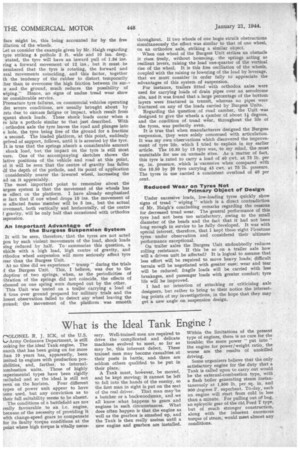What is the Ideal Tank Engine ?
Page 32

If you've noticed an error in this article please click here to report it so we can fix it.
rIOLONEL R. J. ICK, of the U.S. L, Army Ordnance Department, is still coking for the ideal Tank engine. The ;earch that has been going on for more ;hen 10 years has, apparently, been imited to engines with production pissibilities, and, further, to internalsombustion units. Those of highly .xperimental types have been rigidly .xclticled and so the ideal is still not even on the horizon. Four different types of power unit appear to have oeen used, but any conviction as to their full suitability seems to be absent.
The conditions of a battlefield ate not really favourable to an i.c. engine, because of the necessity of providing it with change-speed gears to compensate for its faulty torque conditions at the point where high torque is vitally feces
sary. Well-trained men are required to drive the complicated and delicate machines evolved to meet, so far as may .be, this inherent defect. These trained men may become casualties at their posts in battle, and. there are seldom others qualified to be put in their place.
A Tank must, however, be moved, and be kept moving; it cannot be left to fall into the hands of the enemy, so the first man in sight is put on the seat of the real driver. That man may be a butcher or a backwoodsman, and we all know what happens to gears and engines in such circumstanees. What does often happen is that the engine as well as the gearbox is smashed up, and the Tank is then really useless until a new engine and gearbox are installed. Within the limitations of the present type of engines, there is no cure for the trouble; the more power " put into" the engine for power/weight ratio, the worse are the results of unskilled driving. Some organizers believe that the only satisfactory engine for the" duty that a Tank is called upon to carry out would be the external-combustion type, with a flash boiler generating steam instantaneously at 1,500 lb, per sq. in. and 900 degrees F. superheat. To-day, such an engine will start from cold in less than a minute, For pulling out of bog, an epicyclic gear of the old, Ford T type, but of much stronger construction, along with the inherent enormous torque of steam, would meet almost any conditions.




























































